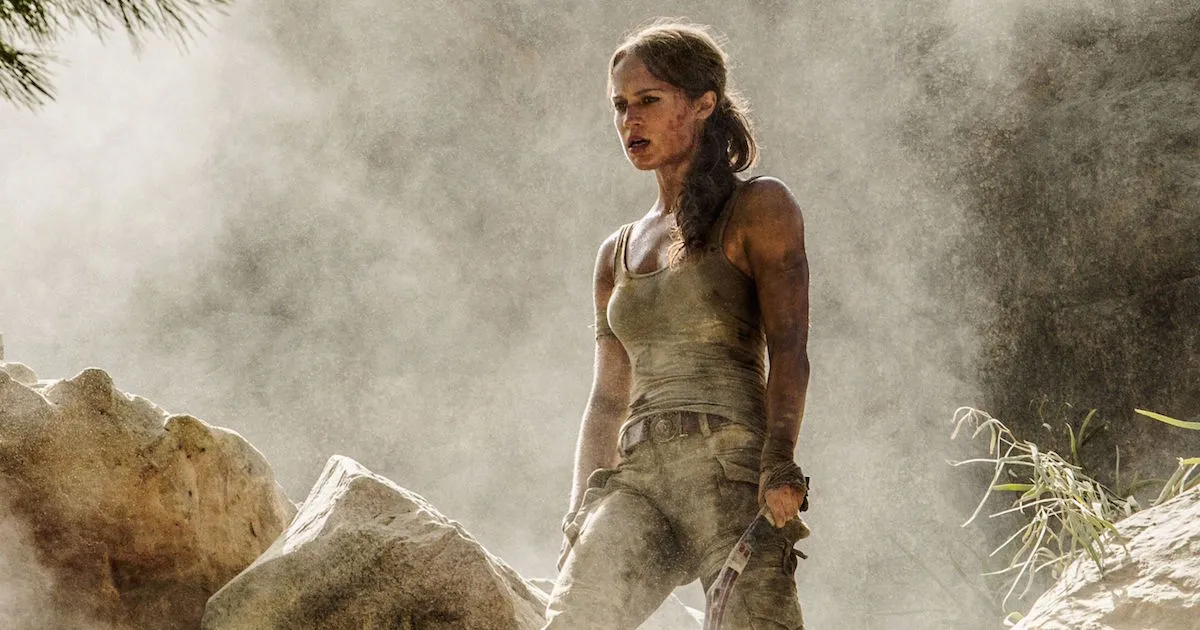It’s not a huge surprise that the new Tomb Raider movie isn’t getting stellar reviews. Of all the genres Hollywood keeps mining, the video game adaptation seems to be the one they just can’t get right. They keep making movies based on video games, and people keep hating them. Of course, they tend to bring in a ton of money, so it makes sense that studios continue to churn them out. (Assassin’s Creed, for example, was nearly unwatchable and still brought in more than $240 million worldwide.) I just don’t know why we keep hoping they’ll be worth watching.
With the bar set that low, I walked into Tomb Raider not expecting much. So I was happily surprised by what I got. Now, I didn’t love this movie, but as far as half-mindless, kinda-fun, basically B-movie action flicks go, this one is more than serviceable. If you end up watching it on a plane, you probably won’t regret your choices. It is a fine movie, which puts it bounds ahead of much of its genre.
The one level on which the movie really did work was as an adaptation of its source material. That’s to be expected, I suppose, since Square Enix, the company behind the 2013 game on which the movie is based, also served as producers on the film. It would be easy for a collaboration between video game devs and a Hollywood production company to end in a cluttered mess of clumsy storytelling. Instead, we got some of the best elements from that truly fantastic game, streamlined into a feature-length adventure.
I’ll admit that some of the adaptation process misses the mark, with certain scenes and action sequences feeling like they simply cut-and-pasted pages from the video game script into the film’s. At one point, Alicia Vikander’s Croft actually says the words, “It’s a color puzzle,” and then we have to watch her solve a color puzzle, as if playing through these sorts of time-waster mini challenges ourselves isn’t tedious enough.
I should also state that I may have been unusually susceptible to the charms of this adaptation, having spent this last week playing through the 2013 game. I put down my controller and walked into a screening, and was blown away by how much fun the movie was. (At least for the first hour. The novelty of the adaptation couldn’t quite make it work much longer than that.) The action felt so familiar that I legitimately found myself miming hitting the quick time event buttons. The easter eggs weren’t obtrusive, but they did feel like a small gift to observant gamers. The way rope was tied to a ladder or the specific color of climbable walls gave me a few quiet chuckles throughout.
There were two major changes from the game to the movie that heavily impacted the final product. The first, as Princess mentioned in her review, was the omission of Lara’s fellow crewmembers. I get that this streamlined the story, but it also meant that Lara was basically the only woman in the whole movie. We see her with a female friend in the opening of the movie and then never again, and Ana (Kristin Scott Thomas), Lara’s father’s business partner, is in maybe three scenes total. And no, the ancient goddess Himito doesn’t count as a female character.
The other major shift was the way the film depicted violence. I understand the view that something may have gotten lost in adapting an MA game into a PG-13 movie, but personally, the film fixed pretty much every issue I had with the game’s use of violence. To start, the game tells players that Lara doesn’t want to use violence—she doesn’t want to kill—but there’s nothing in the actual gameplay to indicate that killing off dozens of baddies is anything but thrilling. In the film, Lara’s first kill is brutal. She screams and cries through it. She may be a fighter, but she’s not a killer. Vikander’s Croft makes that clear.
My #1 least favorite thing about the game is the number of times we are forced to watch Lara die, as it’s almost always an excessively long, gratuitous, moan-filled death, usually by impalement, the sexual connotations of which aren’t exactly subtle. Many of the quick time events involve watching these deaths over and over, as they require you to memorize sequences rather than just utilize skillful playing and quick reflexes. The manner of these deaths always felt, to me, like full-on torture porn, and I was glad to have them removed from the film.
In fact, I never felt like Vikander was being sexualized by the camera. Given the nature of the genre, that feels like quite the feat. There’s a lot about this adaptation that feels like an accomplishment, and if it didn’t all add up to a spectacular movie, it was sure a step in the right direction. If studios are going to insist on adapting video games into blockbuster films, Tomb Raider sets a solid precedent moving forward.
(image: Ilze Kitshoff, Warner Bros. Pictures)
Want more stories like this? Become a subscriber and support the site!
—The Mary Sue has a strict comment policy that forbids, but is not limited to, personal insults toward anyone, hate speech, and trolling.—










Published: Mar 16, 2018 02:54 pm